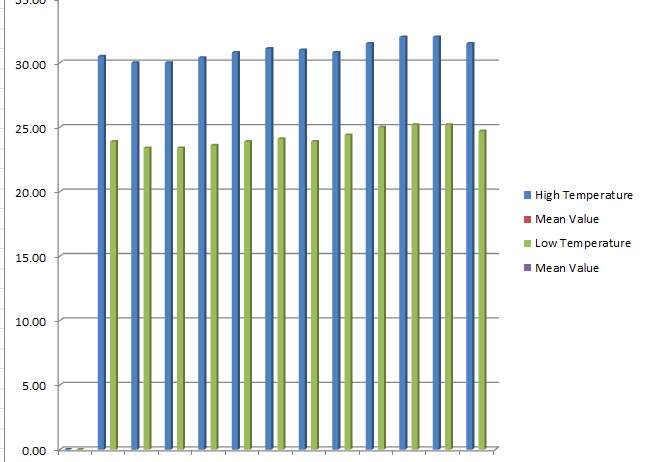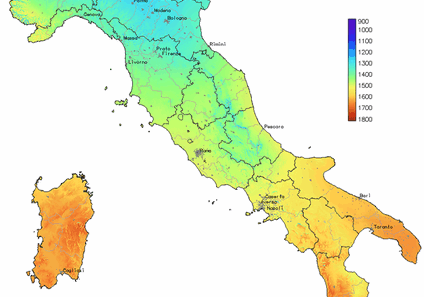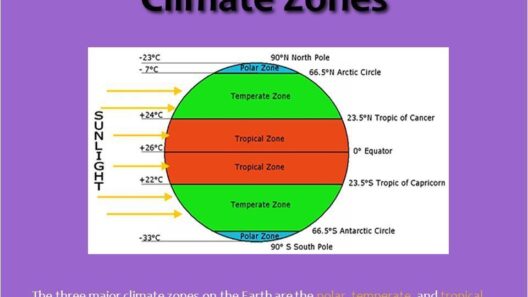The Amazon Rainforest, often dubbed as “nature’s humid powerhouse,” is a veritable cradle of biodiversity and a critical player in the global climate. What precisely defines the climate of this magnificent biome? Is it merely the heavy rain and the lush greenery? Or is there an intricate tapestry woven from myriad atmospheric elements that shapes this extraordinary environment? Let’s delve into the climatic conditions that prevail in the Amazon, the implications of its unique climate, and the challenges posed by climate change.
At the heart of the Amazon’s climate is its tropical rainforest classification, marked by an exceptionally high average temperature, abundant precipitation, and humidity levels that can reach over 90% in certain regions. The Amazon experiences little seasonal temperature variation, with average monthly temperatures typically ranging between 20 to 25 degrees Celsius (68 to 77 degrees Fahrenheit). Such warmth creates a veritable incubator for an astonishing array of flora and fauna.
The Amazon receives an average annual rainfall of about 2,300 millimeters (90 inches), with some areas experiencing upwards of 6,000 millimeters (236 inches). The precipitation is not just abundant; it is pivotal for maintaining the physiological processes of the forest’s vegetation. The region has two principal seasons: the wet season, which spans from December to May, and the dry season from June to November. Interestingly, the term “dry” is somewhat misleading, as it still accounts for a significant amount of rainfall, albeit less than the deluge experienced in the wet season.
The interplay between temperature and humidity creates a microclimate dense with potential. The trees, known to reach towering heights, absorb massive quantities of water, which is released into the atmosphere through a process known as transpiration. This mechanism not only contributes to local humidity but also affects global weather patterns, indicative of the interconnectedness of our planetary systems. In what ways do these processes influence the weather patterns around the globe?
As one explores the Amazon’s climatic complexity, attention must be drawn to the concept of biodiversity. The humid tropical climate fosters a unique array of ecosystems, each adapted to the varying levels of moisture and sunlight. From towering emergent trees that claim the skies to the understory species that thrive in partial shadows, the Amazon’s biodiversity is a product of not only its climate but also the intricate relationships among organisms. It serves as a vivid illustration of ecological resilience, where varied species compete, cooperate, and adapt.
Yet, such an irreplaceable environment faces daunting challenges. Climate change is not an abstract threat; it is a palpable reality impacting the Amazon every day. Rising global temperatures lead to shifts in rainfall patterns, threatening the delicate balance that defines this unique biome. Would it be feasible for the species that have thrived for millennia to adapt swiftly enough to survive these changes? Moreover, deforestation, driven by agriculture, logging, and urbanization, exacerbates these climatic shifts. When these mighty trees are removed, not only is the carbon sequestered within them released into the atmosphere, but the forest’s ability to retain moisture diminishes dramatically, leading to drier conditions and an increased risk of forest fires.
In response to these challenges, one must consider the urgent need for conservation efforts that prioritize the sustainable management of the Amazon Rainforest. Numerous organizations and governments have initiated various strategies to combat deforestation and promote reforestation. Implementing practices such as agroforestry, which integrates trees and shrubs into agricultural landscapes, not only aids in preserving biodiversity but also enhances soil health and carbon capture. How can these initiatives be expanded to maximize their effectiveness?
The future of the Amazon depends significantly on global cooperation. International agreements aimed at reducing carbon emissions and protecting vital ecosystems are paramount. The Amazon’s role as a carbon sink cannot be understated; it absorbs roughly 2 billion tonnes of carbon dioxide annually. Keeping these carbon sinks intact is critical for climate regulation, functioning as a buffer against the ominous specter of climate change.
Beyond the environmental ramifications, the climate of the Amazon also engenders socio-economic complexities. Indigenous communities, who have coexisted with this ecosystem for generations, are facing existential threats from external pressures. Their deep cultural connections to the land foster a unique understanding of sustainable practices that can be invaluable in conservation efforts. The question arises—what role can these indigenous communities play in shaping policies that govern land use, and how can they be empowered to combat climate change?
Ultimately, the climate of the Amazon Rainforest is a microcosm of broader environmental dynamics at play across the planet. It embodies the essence of tropical climate conditions and demonstrates how delicate the balance of life can be. To protect this invaluable resource for future generations, it requires the concerted efforts of local communities, global leaders, and every individual invested in the planet’s health. The pressing question remains: will we rise to the occasion to safeguard one of Earth’s most vital biomes before it’s too late?








